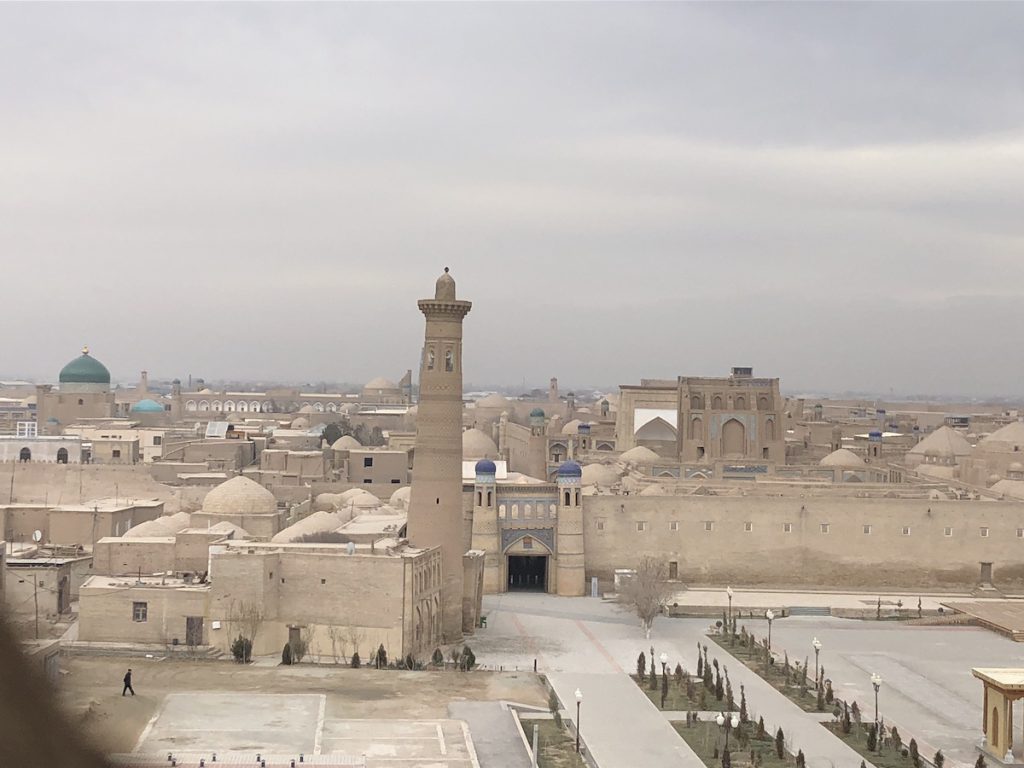
“They looked like lambs in the hands of their executioners,” wrote Arminius Vámbéry in his 1864 book Travels in Central Asia.
“Whilst several were led to the gallows or the block, I saw how, at the sign from the executioner, eight aged men placed themselves down on their backs upon the earth. They were then bound hand and foot, and the executioner gouged out their eyes in turn, kneeling to do so on the breast of each poor wretch; and after each operation he wiped his knife, dripping with blood, upon the white beard of the hoary unfortunate.”
“As each fearful act was completed” he wrote, “the victim, liberated from his bonds, groping with his hands, sought to gain his feet. Some fell against each other, head against head; others sank powerless to the earth again, uttering low groans, the memory of which will make me shudder as long as I live.”
Vámbéry’s journey to the Khanate of Khiva — and onwards to Bokhara and Samarkand — was the first of its kind undertaken by a European. Those who came later would not be so lucky. Khiva was one of the world’s most dangerous cities for outsiders.
Three major powers controlled this part of Central Asia between the 17th and mid-19th centuries: the Khans of Khiva (in yellow) and Kokand (in red), and the Emir of Bukhara (in green). Their borders ebbed and swelled as they fought one another for territory.
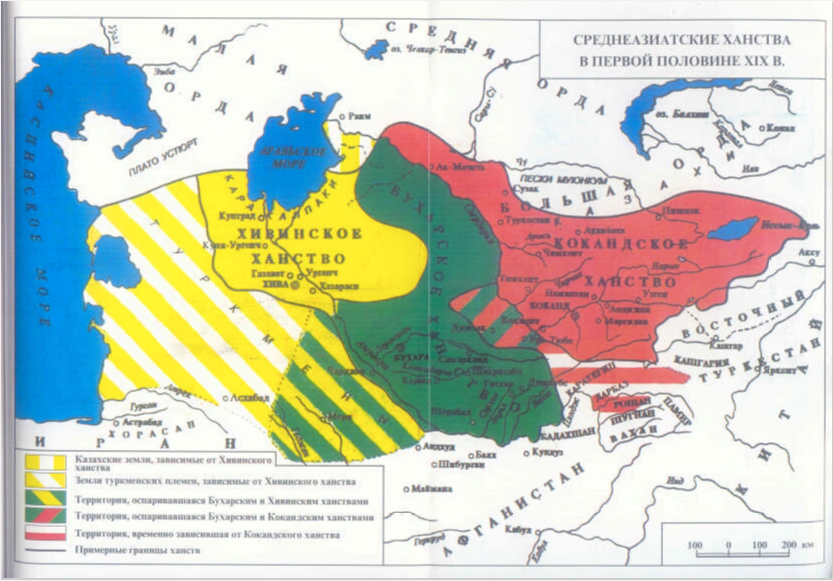
Khiva was somewhat remote from the others. Cut off by the Karakum Desert in the south and the Kyzylkum Desert to the east, it occupied a large oasis region centred on the Amu Darya (Oxus) River delta below what used to be the Aral Sea.
Its hinterland was plagued by Turkmen raiders who roamed the desert towards the Caspian Sea attacking caravans and taking slaves, but those same raiders formed the source of Khiva’s wealth.
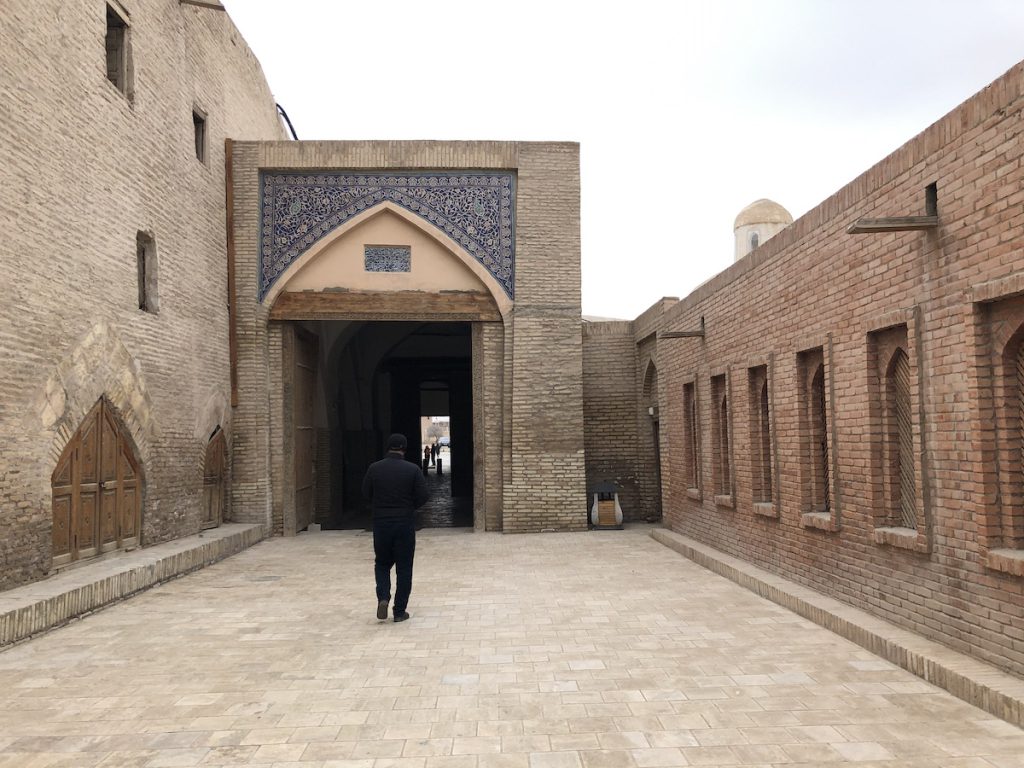
The Khanate prospered between the 16th and 19th centuries through slave auctions that took place in a long passageway in the East Gate of the walled Ichon-Qala (old inner city), where human merchandise was displayed in niches set in the walls.
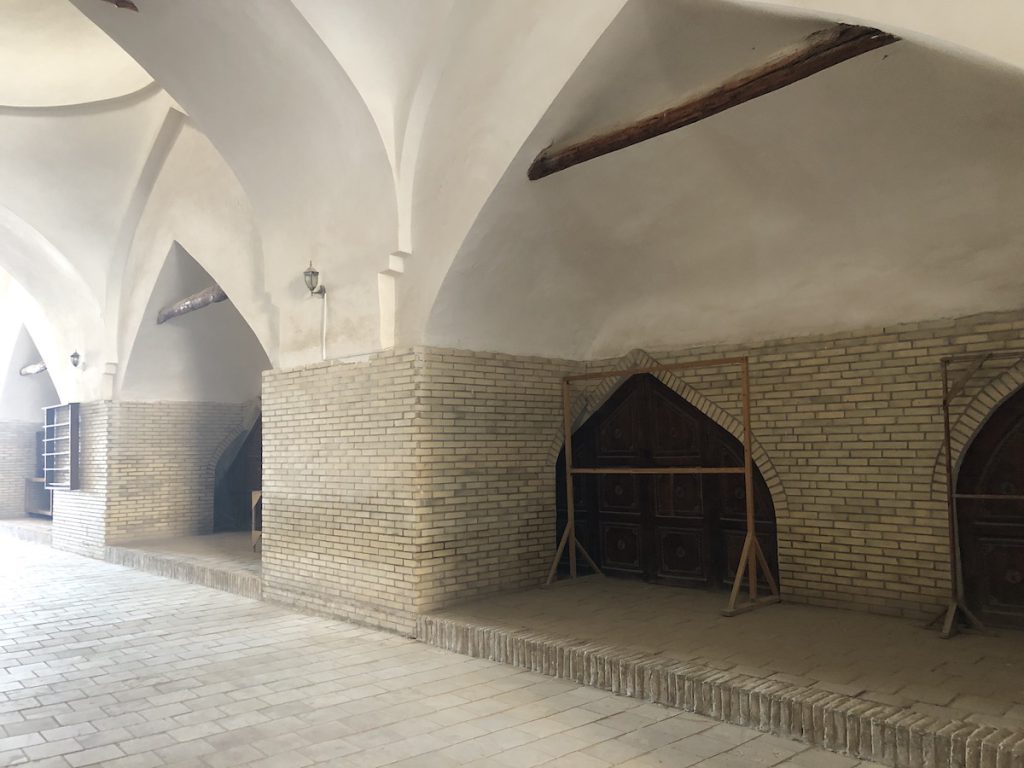
The auctions were profitable, but slaves also formed the backbone of Khiva’s labour force. A visitor writing in 1819 estimated their number at 30,000, mostly Kurds and Persians but also some 3,000 Russians who had been taken while working in fields near the settlement of Orenburg, or who were sailors washed up on Caspian shores.
The Khan ruled from a citadel called the Kuhna Ark, embedded in the Ichon-Qala’s western ramparts immediately north of the West Gate. Originally built in the 12th century, it served as his fortress and primary palace for about 400 years.
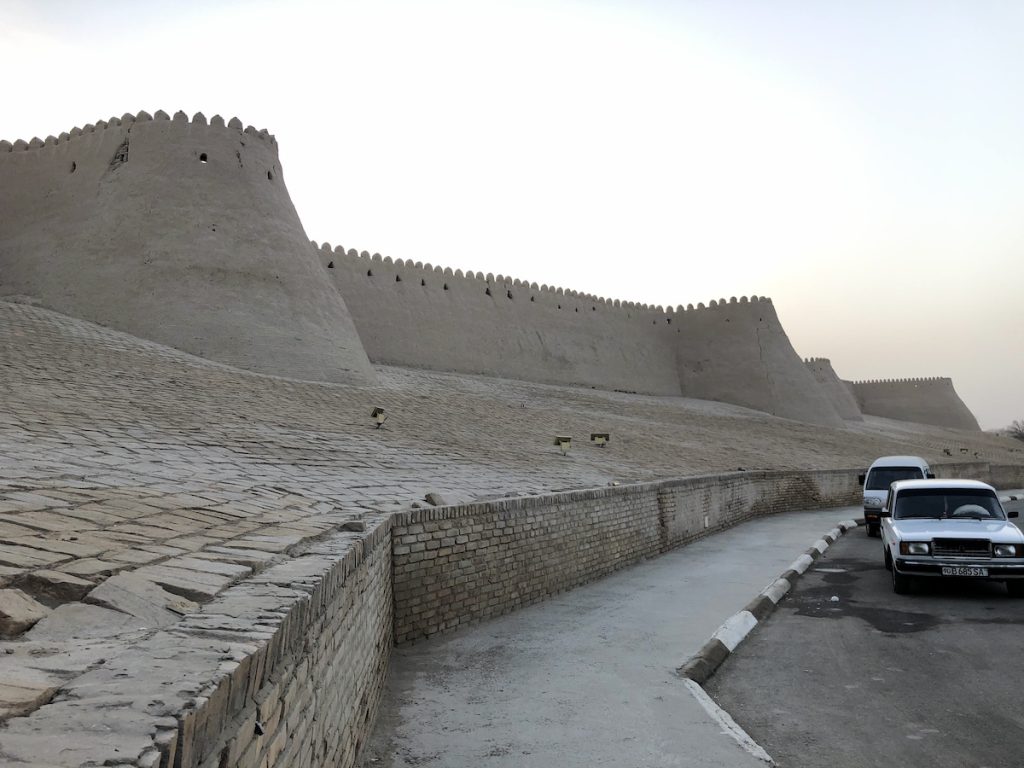
It was a self-contained world of advisors and servants, with lodgings for his extended family, and of course his harem. The rooms are largely empty today, but you can wander through many of them.
A few, like the summer mosque just inside the main entrance, are still clad in intricate tile work, with the wooden roof of the iwan (a space that is walled on three sides and open on one) painted in orange, red, gold and yellow. A blue-tiled mihrab shows the direction of Mecca.
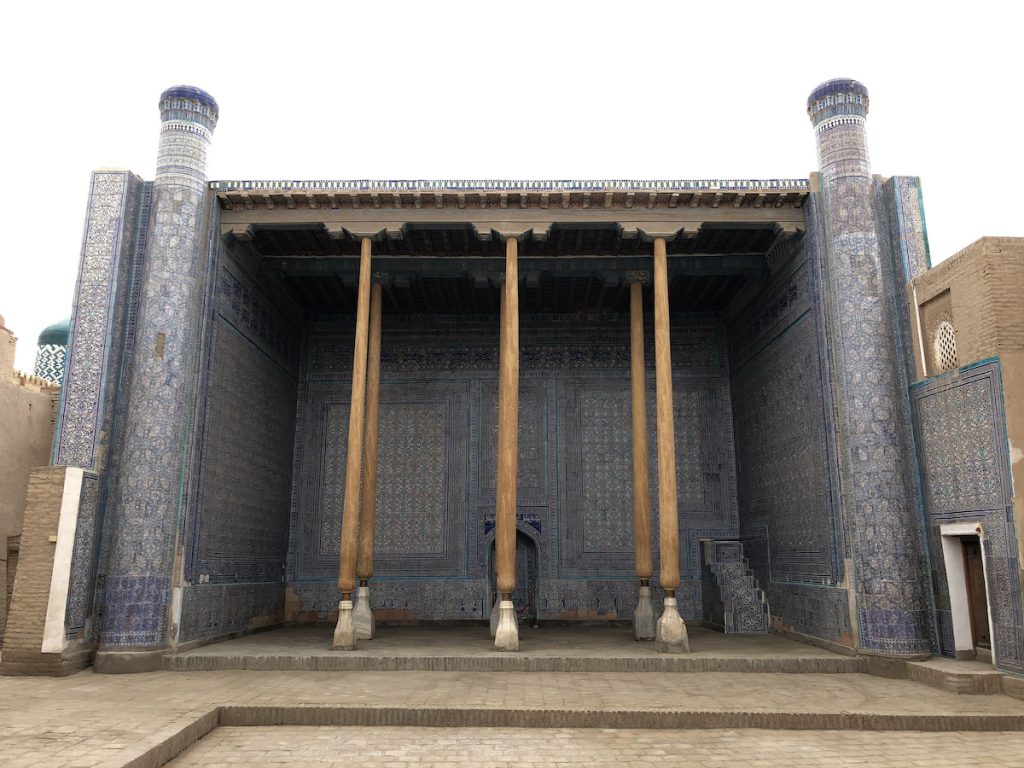
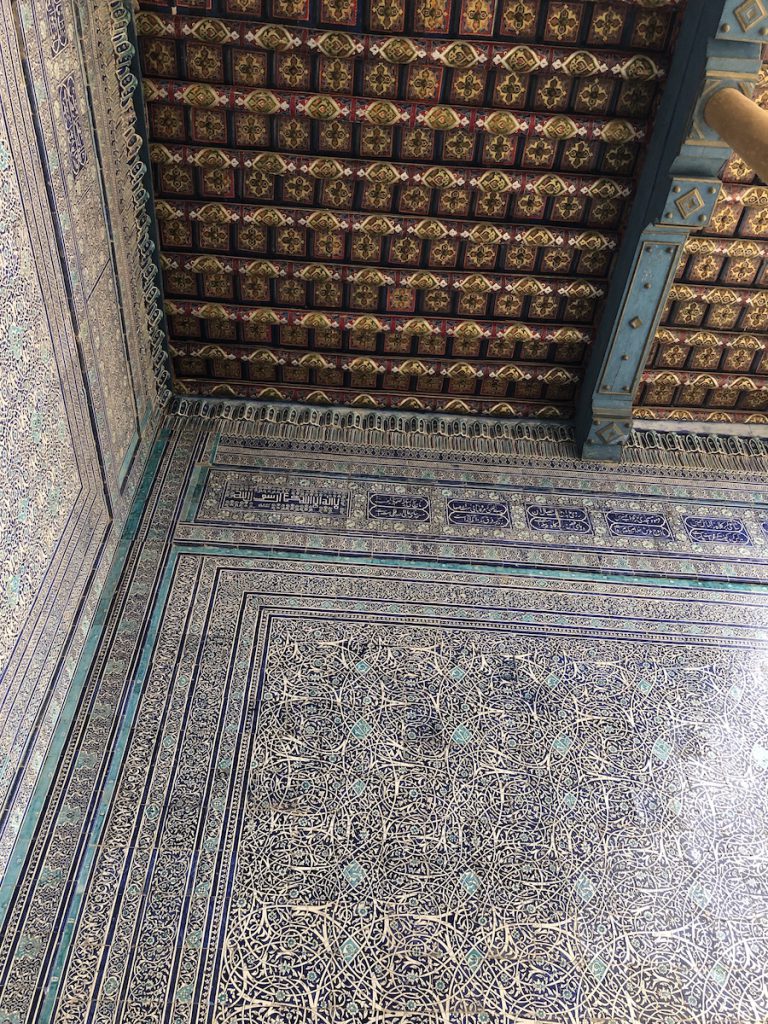
Deeper inside the complex you’ll find the Khan’s reception space bathed in blue tiles. A raised mound occupies the courtyard across from the iwan, where the sedentary rulers of Khiva relived their nomad days in their own felt yurt. A more elaborate winter throne room was added behind the iwan in 1804.
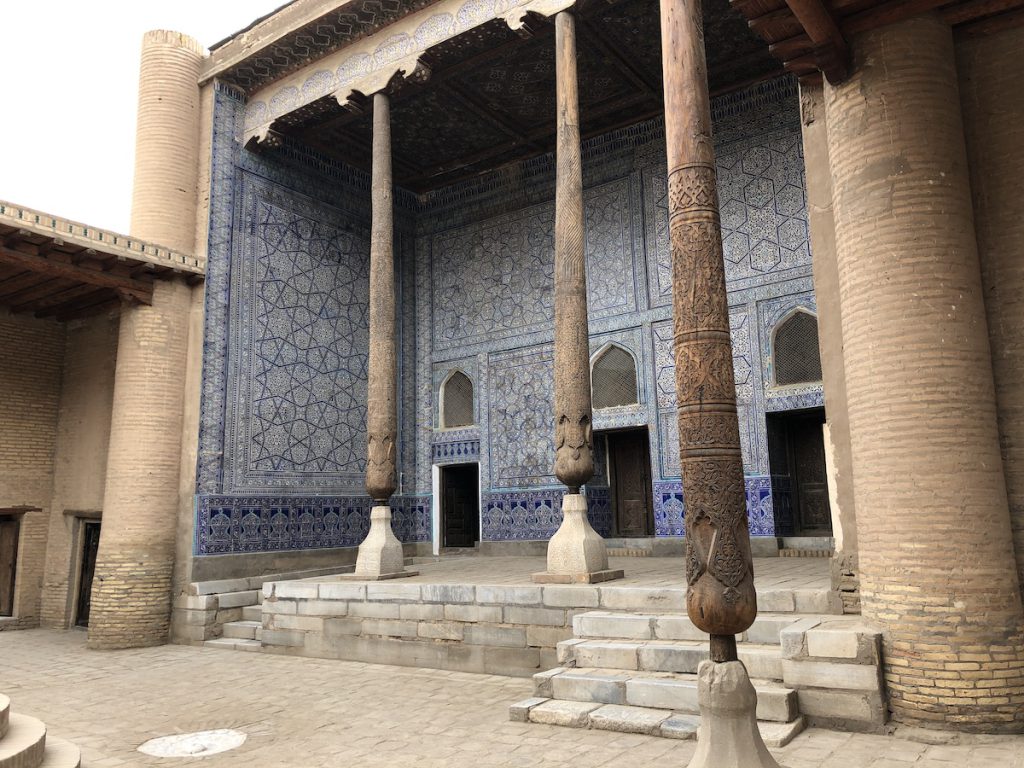
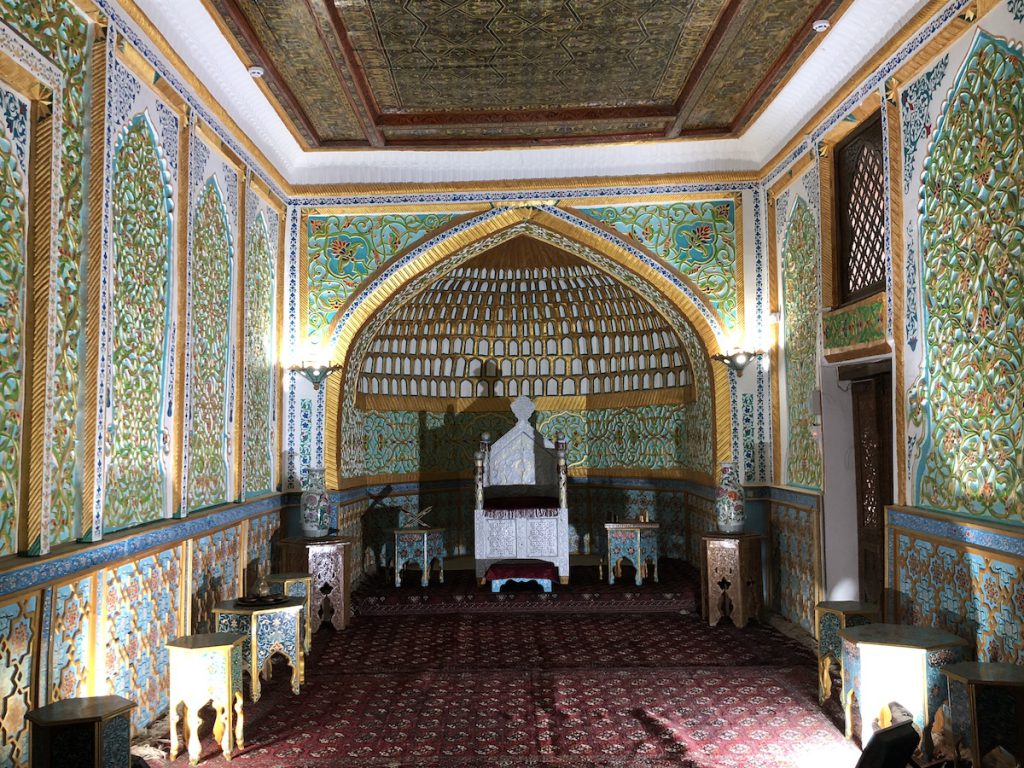
Most of these spaces are empty today, and the harem isn’t accessible at all. What a shame. I was hoping to scope out the ladies. We decided to climb the walls of the AkSheikh Bobo bastion instead to scope out the old town from a two-story watchtower that gave wonderful Christmas Day views of Khiva.
I’ll have more to say about the antiquities of Khiva in my next blog. But first, we have to finish the story of the cruel old Khans.
Immediately outside the walls of the Ark, you’ll find a small zindon (jail) with displays of chains and other depictions of justice under Khan Said Mohammed, who ruled at the time of Arminius Vámbéry’s visit.
Impaling was a special favourite. The Russian traveler Captain Nicholay Muraviev gave this description in his Journey to Khiva Through The Turcoman Country 1819-1820:
“The stake is of wood, and has a rather blunt point, and, in order that the victim may not die too soon, his hands and feet are firmly bound; as soon, however, as the stake has entered pretty deep into his body, they are released again, when the tortured wretch increases his sufferings by his violent struggles. Sometimes an impaled man will live for two days on the stake, only dying when the point comes through his shoulders or back.”
Other milder forms of punishment included flogging, and slitting the mouth to the ears.
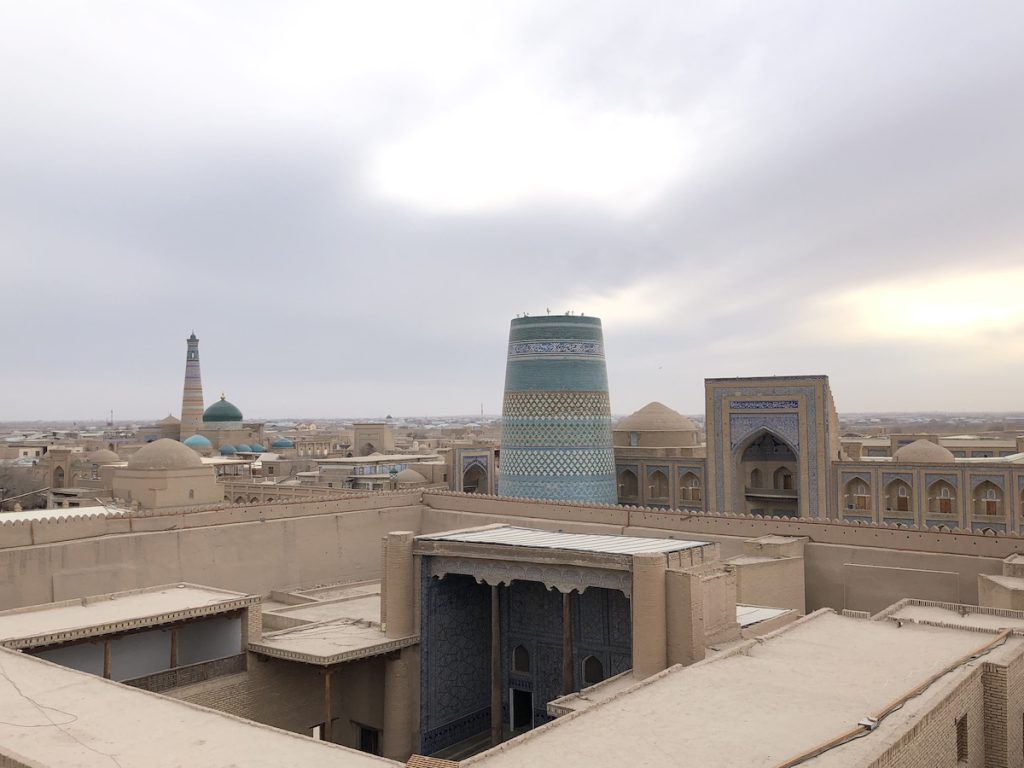
All of this was happening during a period of rivalry between Russia and Britain for control of Central Asia.
Tsarist Russia was on the move, advancing across Siberia and creeping south into Central Asia, regions it saw as its natural sphere of influence.
Political hawks in Britain knew that Russian troops on the border of Afghanistan could move down through the Khyber Pass to target India, the crown jewel of its Imperial possessions. They also knew much of the territory between the two empires was unmapped. The Karakoram, Pamir and Himalaya ranges might contain passes that threatened India more directly.
For their part, the Russians knew a military presence in this area would divert British attention and troops from their activities in the Black Sea, a region they wanted to dominate.
Thus began The Great Game, a fascinating period of spying, clandestine mapping and exploration in Central Asia and the convoluted mountain ranges that form the Roof of the World.
As for the Khans, they thought themselves invincible in their desert fastness, and they had little knowledge of the outside world. Russia was just another powerful khanate, and they assumed Great Britain was a caste of Russians.
Early efforts to reach their walled citadels only reinforced this view.
In The Lost Heart of Asia, Colin Thubron writes, “Three Cossack expeditions sank against them, and in 1717 a 4000-strong Russian force under Prince Bekovich was deceived by a pretence of hospitality, then massacred almost to a man. In 1839 another expedition, after floundering through freak snowstorms, returned without a blow struck, littering the desert with the frozen corpses of a thousand men and none thousand camels.”
The pretext for that 1839 attack was to free the increasing number of Russian slaves held at Khiva, but the British knew a military incursion would open the door to annexation.
Captain James Abbot was sent from Herat disguised as an Afghan trader. He eventually convinced the suspicious Khan to give him a letter to the Tsar, but was betrayed by his guide and robbed in the desert by bandits on his way to deliver it.
A second officer, Lieutenant Richmond Shakespear, had better luck. He secured the release of all Russian slaves and escorted them to Fort Alexandrovsk, earning a grudging thanks from the Tsar and nipping the conquest of Khiva in the bud.
Expansion continued, with the Russians establishing a permanent presence on the Aral Sea in 1848 with Fort Aralsk. More forts and settlements followed along the Syr Darya River east of the Aral Sea. Military action was only a matter of time.
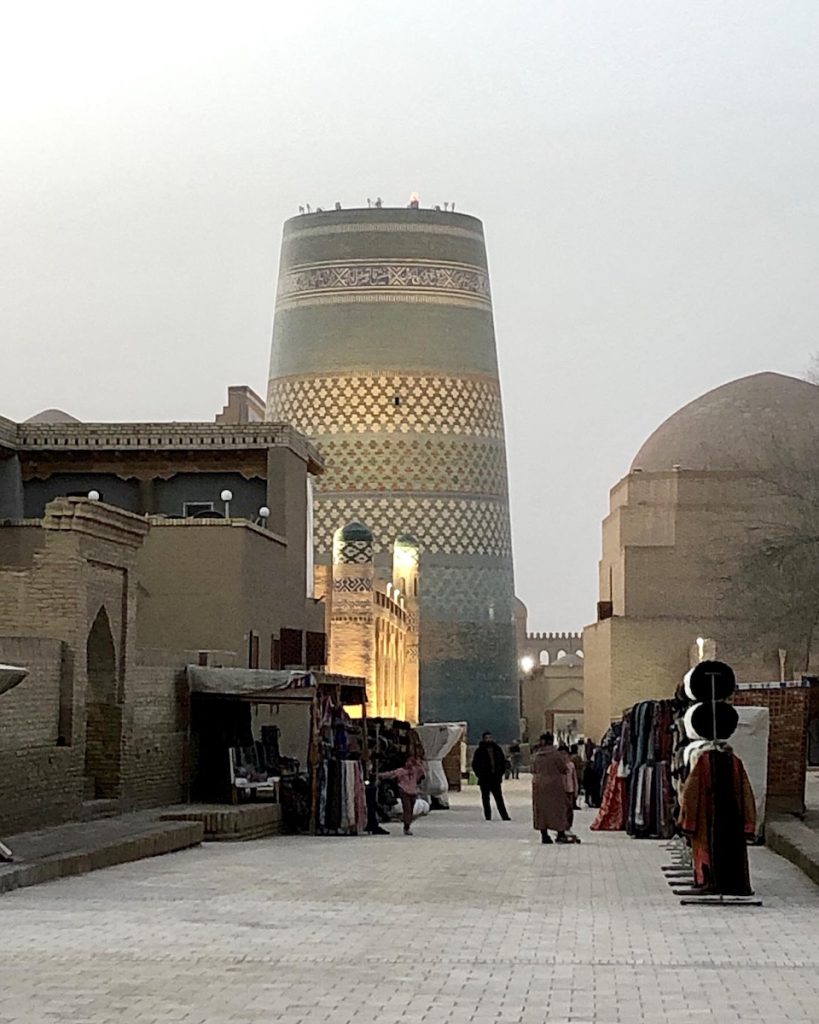
After conquering the cities of Tashkent and Samarkand, the governor of the new Province of Turkestan, General Konstantin Kaufmann, launched a three-pronged attack on Khiva in 1873 with some 13,000 infantry and cavalry. The Central Asian khanates couldn’t resist a modern military no matter how thick their mud brick walls. He took the city on 10 June with scarcely any Russian casualties.
The once might Khanate of Khiva was reduced to a puppet state that would last until the coming of the Bolsheviks in 1920.
That’s the story of the cruel Khans of Khiva. And that’s where we’ll leave it for today.
Have a look at the books I referenced above if you’d like to know more. If you read only one, make it The Great Game by Peter Hopkirk.
I’ll tell you about Khiva’s glory days in the next blog.

Great article as we absorb your stories as armchair travellers.
Glad you enjoyed this one Chuck. It’s such an interesting place.
Another little trip out of our comfort zone in our home 😉
Glad you enjoyed that one. More to come.